|
BULB LOG 41 5th October 2004
As I write this log I am preparing to travel to North America on a NARGS Lecture tour. Can you guess what I have been asked to speak on? Yes it is bulbs.
Here are the dates:-
Thursday 7th October, I will be in Minneapolis at the Minnesota Chapter;
Saturday 10th October, at the Delaware Valley Chapter in Philadelphia ;
Thursday 14th I am up in Canada, St John's Newfoundland;
Saturday 16th I am back in the USA at the New England Chapter in Sudbury MA;
Sunday 17th will be at Pelham, New York, for the Tri-State Meeting, where I am giving two talks.
All Chapters have chosen my talk 'The Challenge of Growing Bulbs' which takes you through my method of growing bulbs in pots and finishes off looking at bulbs in the garden. In New York I am also giving a second talk which is on Fritillaria and Erythronium.
Details of all these Chapter meetings can be found on the website of NARGS at
www.nargs.org.
Come along and see the 'live bulb log road show' and say hello.
I have prepared slightly shorter logs for the time I am away and these will be posted as normal.

Flying to America
This could be me flying over our garden on my way to cross the Atlantic.
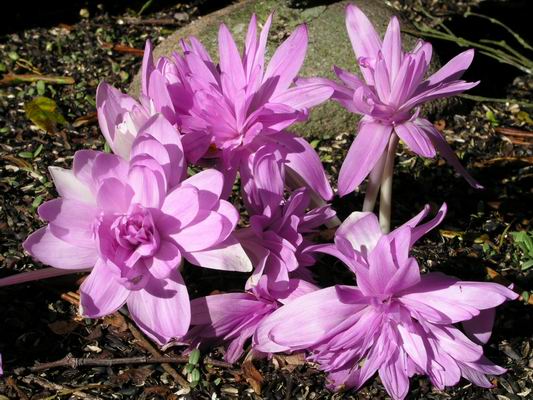
Colchicum 'Water Lily'
This mutation of a colchicum is the old cultivar, Colchicum 'Water Lily'.
It is a multiplex form that has far too many petals for its own good but a lot of people like these unusual forms.
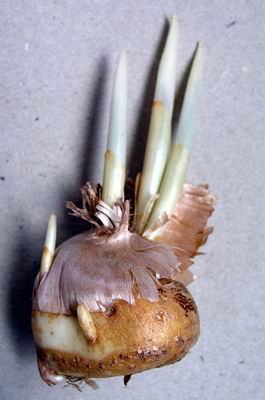
Crocus sativus corm
Crocus sativus has been cultivated for centuries to provide saffron which is the dried stigma from the flower. It is not expensive to buy the corms every year and this ensures that you will get to enjoy the beautiful flowers.
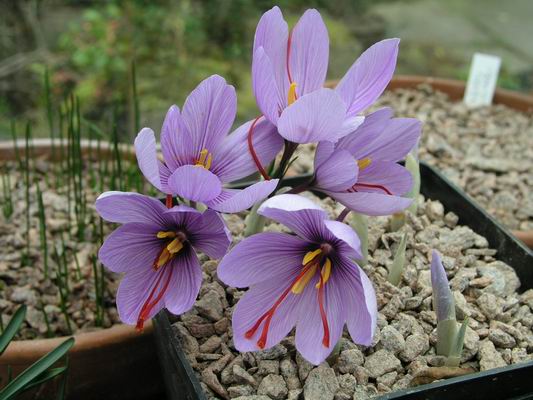
Crocus sativus
You can see the style which splits very low down into three long red threads; these are what are harvested to produce saffron. You can imagine how many flowers you would need to collect any amount, hence the high price of this spice. Crocus sativus has a problem in gardens; it tends to break down into multiple small non-flowering corms that take a long time to get back to flowering size. We have had some success in repeat flowering in recent years by growing it in a pot, giving it plenty potash rich food and a good warm summer rest.
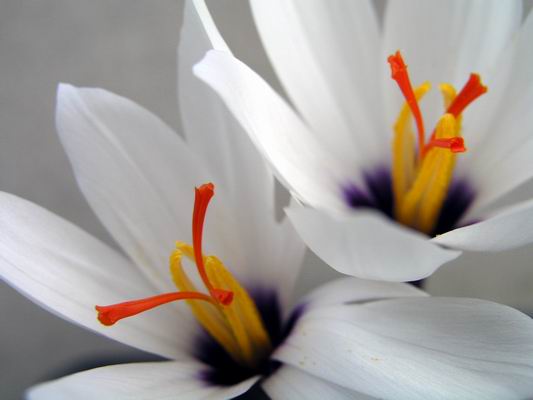
Crocus mathewii
Crocus mathewii also features bright red contrasting style branches set off against the white petals and the blackcurrant coloured throat. Not all the forms of Crocus mathewii that I have seen have this lovely dark throat which makes it such a beauty.
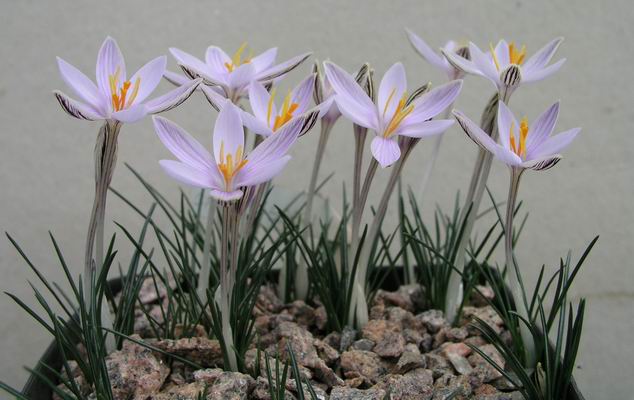
Crocus cambessedesii
I am always captivated by the charm of this small and beautifully marked Crocus cambessedesii. With it being so small we have never tried it outside the fear is that it would get swamped by other plants. We do have several seed pots that are in an open frame so it would appear hardy enough, perhaps when they reach flowering size we will have enough to try some in a raised bed or trough where we will be able to appreciate this wee gem.
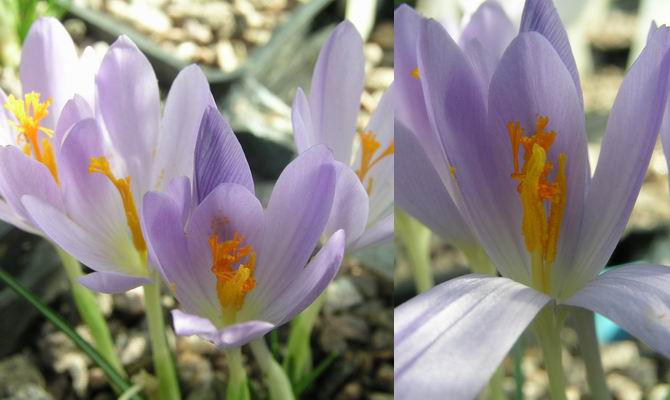
Crocus serotinus salzmannii
Crocus serotinus salzmannii flowering in a pot in the bulb house but it will also grow in a sunny well drained garden bed.
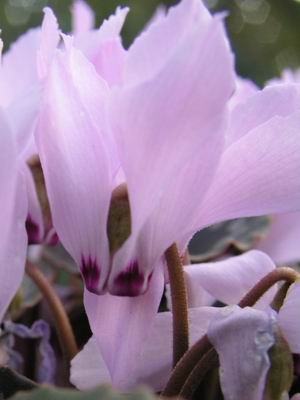
Cyclamen mirabile close
Cyclamen mirabile is another delicate looking plant that we feel the need to protect but it also is hardy to most of what our weather can throw at it, as long as we choose the correct planting spot.
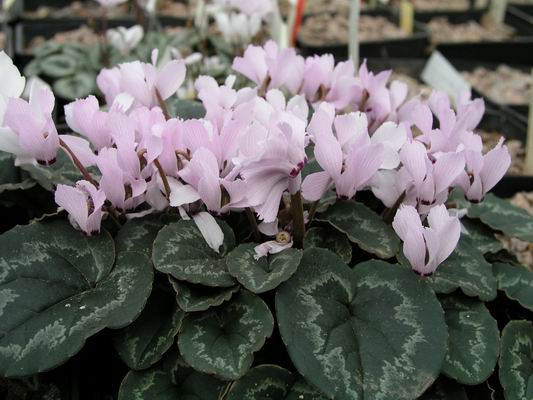
Cyclamen mirabile
We will always grow some in pots so that we can enjoy them under the shelter of the bulb house.
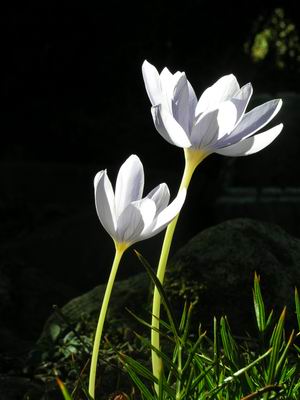
Crocus pulchellus
Can you spot anything unusual in this picture of Crocus pulchellus?
One of the flowers has more than its normal number of petals.
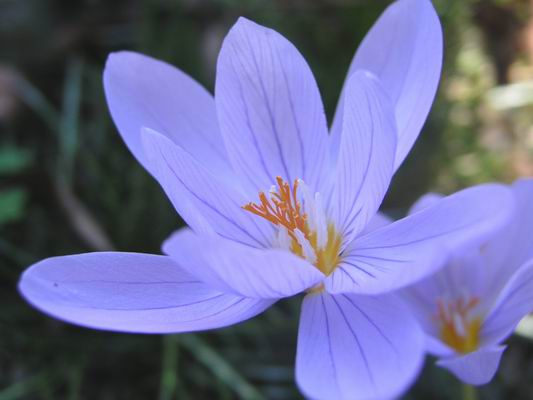
Crocus pulchellus multiplex
It is well on the way to being a double flower with extra petals, extra style branches and anthers. Many flowers will produce an occasional mutation like this. It was probably caused by damage to the embryo bud as it was forming which means that it should come up as normal next year. Just very occasionally it is caused by a genetic 'error' in the plant which would be permanent. Then the double feature would be passed on to any vegetatively propagated plants, as in Colchicum 'Water Lily'.
^ back to the top ^
|

